
Exploring the Marvels of the Galapagos Islands: 21 Intriguing Facts | Travel Blog
The Galapagos Islands, hailed as a natural paradise where wildlife thrives without fear of humans, have captured the world's imagination. Charles Darwin's transformative visit in the mid-1800s propelled these Enchanted Isles into global prominence. Since then, countless visitors have wandered along their volcanic shores, seeking remarkable encounters with unique wildlife. With over 400 fish species and a diverse range of wildlife, the Galapagos are a haven for naturalists. Amidst the plethora of wonders, we've distilled 21 captivating facts that shed light on this extraordinary archipelago.
Table of content
- A Protected Haven: 97% National Park
- Volcanic Vigor
- Remote Pacific Sanctuary
- Booby Beauties
- A Tropical Penguin Haven
- Marvelous Marine Iguanas
- Timeless Island Exploration
- Endless Sunlit Moments
- Timeless Giants: Galapagos Giant Tortoises
- Sea Turtles: Timeless Travelers
- The Galapagos: Born of Fire and Tectonic Forces
- Evolution Unveiled: Galapagos as Darwin's Muse
- Marine Extravaganza: Diverse Waters of Galapagos
- Galapagos: A Name With a Twist
- Galapagos: Nature's Year-Round Haven
- Intimate Galapagos Exploration: Exclusive Cruising Experience
- Galapagos: A Dynamic Landscape of Creation
- Nature's Orchestra: Galapagos and the Symphony of Currents
- Up Close and Personal: Fearless Galapagos Wildlife
- Galapagos Mystique: The Enigma of the Post Office Barrel
- Nature's Ingenious Arrivals: Galapagos Settlers of the Sea
1. A Protected Haven: 97% National Park
Nestled within Ecuador's embrace, the Galapagos Islands constitute a province, where 97% of the territory is designated a national park and protected area. This UNESCO World Heritage site also stands as an essential Biosphere Reserve. To explore these preserved realms, visitors require park-certified guides. Upon entry at San Cristobal or Baltra airport, a National Park fee is payable – $100 USD for adults and $50 USD for children, with discounts for Andean pact citizens and Ecuadorian residents ($20 USD).
2. Volcanic Vigor
Every island in the Galapagos archipelago is a summit of a suboceanic volcano, and these volcanic landscapes are still active. Recent eruptions in 2018 on Fernandina Island and Isabela Island's Sierra Negra volcano underscore their dynamic nature. Isabela's Wolf Volcano erupted in May 2015, its lava flow sparing the pink iguanas unique to the region. Witnessing a volcanic eruption from expedition ships is a rare and awe-inspiring encounter.
3. Remote Pacific Sanctuary
Situated approximately 580 miles (930 km) off South America's coast and east of mainland Ecuador, the Galapagos Islands dot the Pacific Ocean. Comprising 20 primary islands, most volcanic in origin, and surrounded by around 42 minor islets and 600 oceanic rocks, the archipelago forms a remote haven for biodiversity.
4. Booby Beauties
The Galapagos Islands host three distinct species of booby birds – part of the Sulidae family, known for their "bobos" or clumsy walk on land. These remarkable seabirds, despite their ungainly demeanor on the ground, are masterful flyers. The archipelago houses the iconic blue-footed boobies, easily distinguishable masked or Nazca boobies, and the abundantly populous red-footed boobies. Each species boasts unique traits and behaviors, from the captivating blue-footed booby dance to the mesmerizing plunge dives of the blue-footed and masked boobies.

5. A Tropical Penguin Haven
Remarkably, the world's smallest penguin species calls the Galapagos Islands its home. The Galapagos penguin's presence at the Equator is an intriguing twist of nature.
Contrary to its tropical surroundings, this penguin flourishes in these waters. The Humboldt Current cools the ocean, fostering a microclimate that sustains these penguins. In fact, 2020 witnessed a remarkable 20% population increase, showcasing their resilience. Spots like Bartolome, the western Isabela, Fernandina, and even Floreana Island host these pint-sized creatures.
Embark on a Galapagos West Islands cruise to immerse yourself in the penguin wonderland.
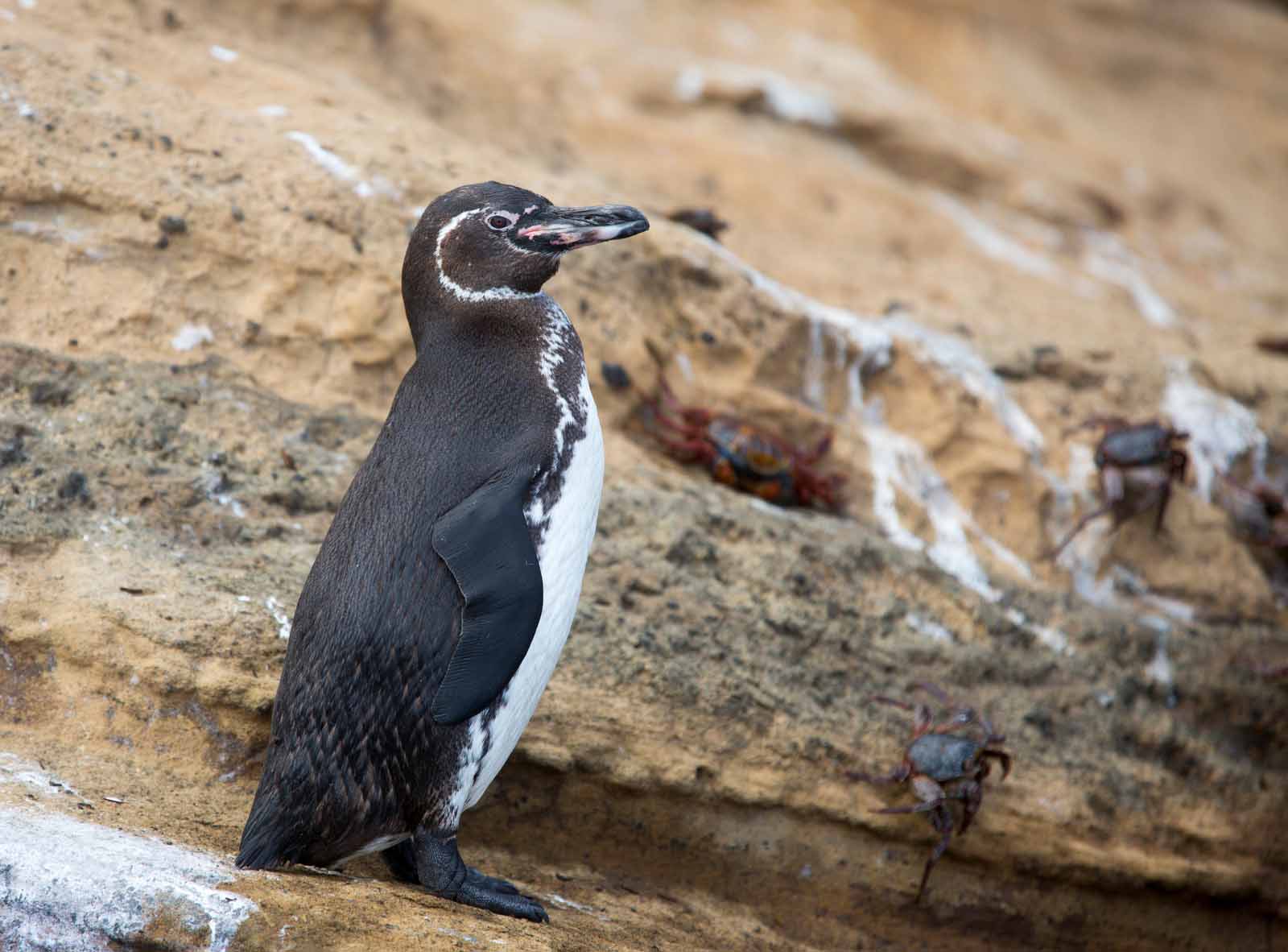
6. Marvelous Marine Iguanas
Once labeled "imps of darkness" by Charles Darwin and now reminiscent of Godzilla, the marine iguanas stand as the world's sole ocean-going lizards. These captivating creatures are endemic to the islands and straddle both land and sea.
Their distinctive adaptation involves a diet of seaweed that they consume underwater and then "cook" within their stomachs, expelling salt through their nasal passages. This remarkable species navigates the currents with ease due to their adept swimming and resilient claws.
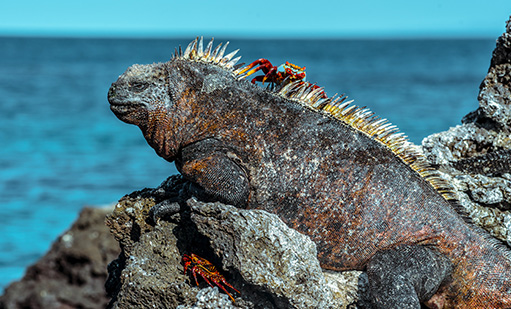
7. Timeless Island Exploration
The Galapagos Islands welcome you year-round, offering an evergreen playground for adventurers. Resting atop the equator, the climate remains constant. Experience two distinct seasons: the wet/hot season from December to May marked by brief daily showers and humidity, and the cool/dry season from June to November, accompanied by light mist known as "garua."
Temperatures vary, with warmer waters (79°F or 26°C) during the hot season, perfect for snorkeling. Conversely, the cooler season ushers in trade winds and the Humboldt Current, enriching marine life.
8. Endless Sunlit Moments
Situated at the equatorial midpoint, the Galapagos Islands bask in perpetual daylight, with 12 hours of sun and an equal share of starry nights. This celestial balance gifts breathtaking sunrises and sunsets, enhancing your island-hopping journey.
9. Timeless Giants: Galapagos Giant Tortoises
Majestic and serene, the Galapagos giant tortoises have witnessed the passage of time like silent sentinels. These ancient reptiles are Earth's oldest living, enduring over a century.
Thriving in diverse habitats across Santa Cruz, San Cristobal, Isabela, and Floreana, these giants exhibit distinct sub-species adapted to their island environments. Conservation centers offer glimpses of these magnificent creatures in their natural habitat, serving as a living testament to the evolution of life itself.
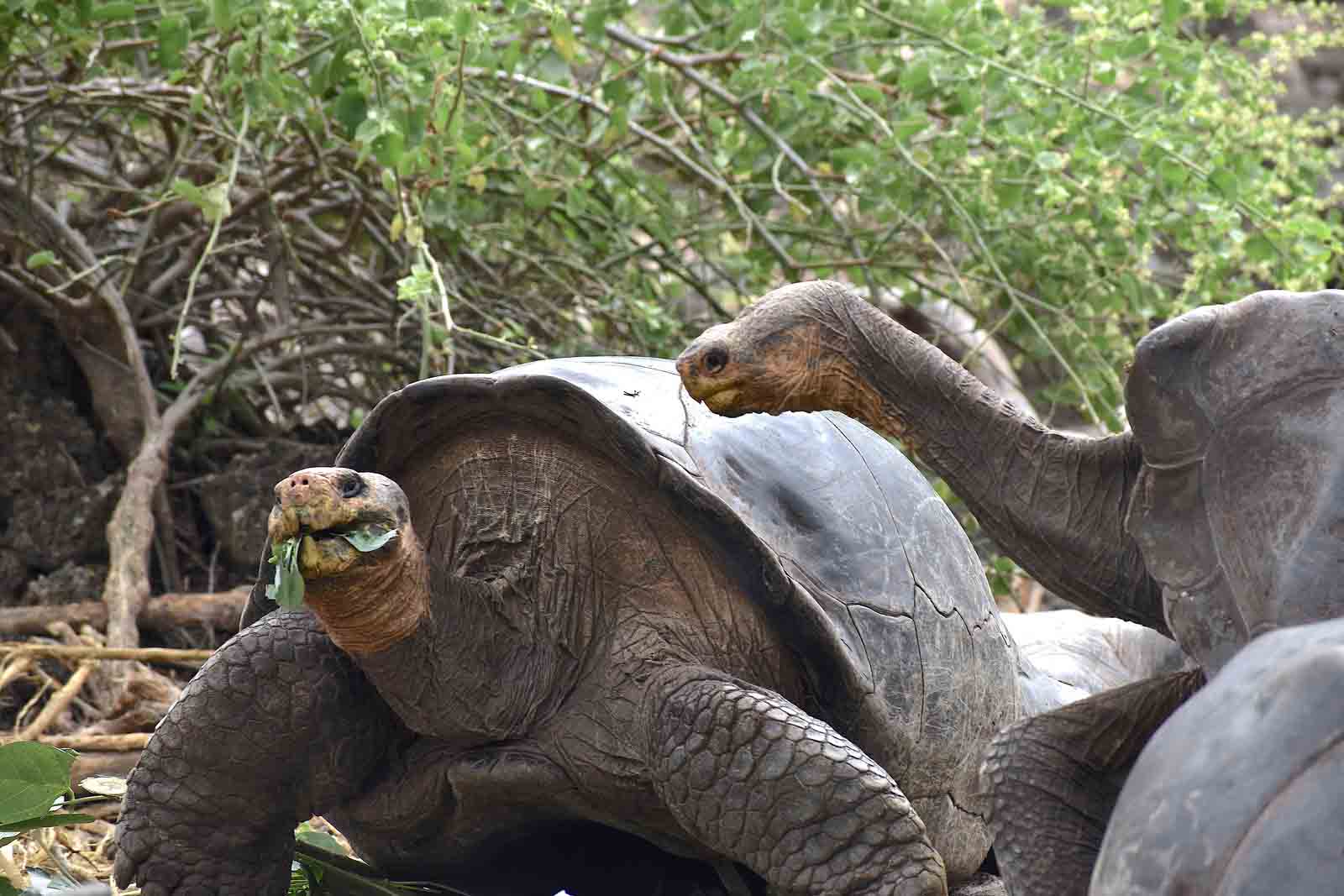
10. Sea Turtles: Timeless Travelers
If sea turtles could share their tales, they would spin stories of ancient epochs. These graceful creatures possess an incredible navigational prowess - they return to the very beaches they hatched on to lay their own eggs. Despite traversing oceans, their homing instinct guides them back to their origins. In the Galapagos, these serene swimmers grace numerous snorkeling and diving sites within the marine reserve. Their existence spans ages, with scientific evidence suggesting they once shared the seas with dinosaurs and colossal prehistoric creatures.
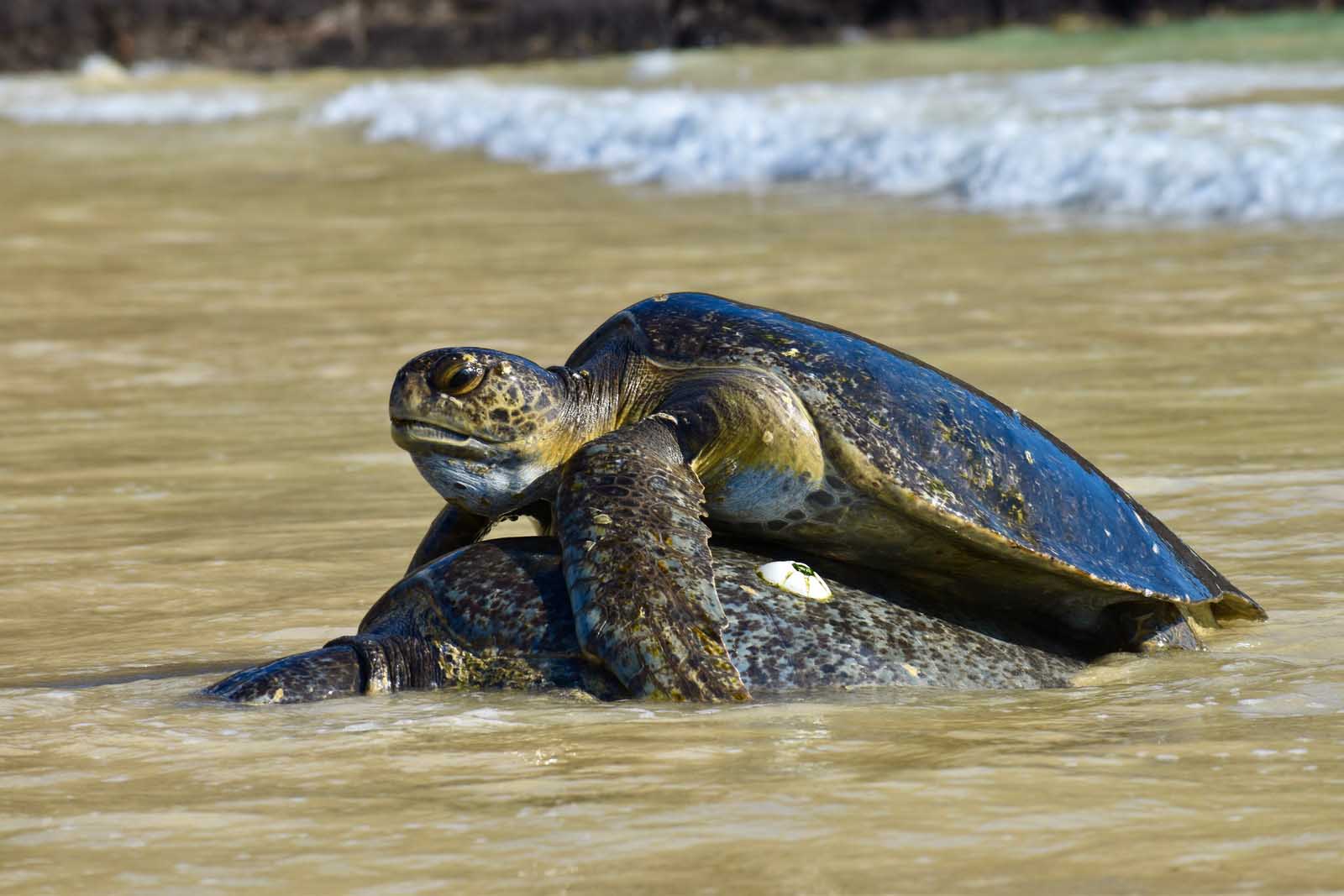
11. The Galapagos: Born of Fire and Tectonic Forces
Nestled upon the Pacific's "Ring of Fire," the Galapagos Archipelago is a testament to tectonic grandeur. In this crucible of geologic forces, plates collide, and Earth's crust gives way to molten torrents, birthing islands. This remarkable origin narrative has endowed the Galapagos with its unique character. The confluence of the Nazca, Coco, and Pacific plates has sculpted a landscape of vibrant lava fields, kaleidoscopic sands rich in volcanic minerals, and otherworldly formations. Volcanic eruptions, as ancient as time, have shaped this extraordinary archipelago.
12. Evolution Unveiled: Galapagos as Darwin's Muse
Embarking on his seminal voyage, Charles Darwin's encounter with the Galapagos fauna catalyzed a revolution in science. Amidst these volcanic heights, Darwin observed subtle variations among akin species, adapting to the challenging environment. This remarkable insight germinated the "theory of evolution by natural selection." His theory hinges on the imperative of adaptation for survival, beautifully embodied in the Galapagos finches' beaks, tortoise shells, and the flightless cormorant. The Charles Darwin Research Station stands as a tribute to this profound connection, a beacon of learning on Santa Cruz Island.
13. Marine Extravaganza: Diverse Waters of Galapagos
The Galapagos Marine Reserve harbors a mesmerizing underwater world. A tapestry of almost 1000 mollusk species and hundreds of unique fish species dance through its azure waters. Among these aquatic treasures are the emblematic oysters, the endemic canchalagua, the enigmatic squid, and the elusive octopus and cuttlefish. With over 400 fish species, the Galapagos National Park becomes an aquatic wonderland, where snorkeling unveils an ethereal realm beneath the waves.
14. Galapagos: A Name With a Twist
Behind every name lies a captivating tale. "Galapago," translating to saddle, mirrors the unique shape of tortoise shells, reminiscent of a riding saddle. The iconic Fray Tomas de Berlanga and his Spanish crew marveled at these saddleback tortoises, dubbing the archipelago the "Galapago" Islands. Despite its official name as "Archipelago de Colon," history favored the colloquial moniker "Galapagos."
15. Galapagos: Nature's Year-Round Haven
Nestled within the embrace of the Humboldt Current, the Galapagos Islands experience temperate weather year-round, defying their equatorial location. Despite preconceived notions of heat and humidity, the average temperature ranges from 80°F to 87°F (27°C to 31°C) during the hot season. As the cooler months embrace the islands, temperatures dip to a mild 69°F (20°C). The ocean's embrace maintains water temperatures between 62°F to 74°F (16°C to 23°C), a comforting constant throughout the seasons.
16. Intimate Galapagos Exploration: Exclusive Cruising Experience
With an annual liveaboard cruise count of fewer than 79,999 visitors, the Galapagos Islands offer a rare and cherished journey. In the peak year of 2019, the islands welcomed slightly over 200,000 travelers. However, 2020 witnessed an unprecedented shift, with only around 1000 passengers monthly between August and November. December is projected to see less than 10,000 visitors. This data encompasses all tourism facets, yet the realm of liveaboard voyages paints an even more exclusive picture. Those opting for motor vessel expeditions, primarily small yachts and expedition ships, constitute a mere 30% of total visitors. To provide context, the Galapagos has hosted fewer guests in a decade than destinations like Venice receive in a single day.
The Galapagos Islands stand as an oasis of tranquility, a sanctuary for these pandemic times and beyond. Far from crowded scenes, this archipelago offers a pristine escape into nature's embrace. Remarkably, each guide accompanies a maximum of 16 guests, delivering personalized service while upholding conservation goals. This adherence is among the 12 Galapagos National Park regulations, safeguarding the islands and ensuring an unparalleled wildlife encounter for every visitor. Notably, all guides must hold certification from the GNP, underscoring their commitment to the islands' preservation.
17. Galapagos: A Dynamic Landscape of Creation
A dance of constant volcanic forces weaves the Galapagos archipelago into a tapestry of evolution. This vibrant mosaic showcases both the birth and decline of islands. In the western reaches, Fernandina stands as the newest addition, a testament to ongoing volcanic activity. Simultaneously, older siblings gracefully recede into the embrace of the sea. The age spectrum ranges from the ancient Española Island, the eldest, to the nascent formations. Though this transformation spans millions of years, the islands' perpetual evolution is an awe-inspiring narrative. Intriguingly, while the Galapagos boasts an age of approximately 4 million years, its distant kin in Hawaii exceeds the grand milestone of 90 million years.
18. Nature's Orchestra: Galapagos and the Symphony of Currents
The meeting of oceanic currents in the Galapagos waters orchestrates both harmony and drama. The warm embrace of the El Niño current brings chaos, causing distress among marine inhabitants that cannot withstand its heated embrace. Contrasting this, the frigid embrace of the Humboldt current fertilizes life, nurturing thriving species. Fortuitously, the El Niño phenomenon is a sporadic event, while the Humboldt current and La Niña showcase consistent roles. The Equatorial, Cromwell, and Panama currents further intersect in this aquatic ballet. Anchored at the equator, the islands remain protected from hurricane forces, yet the ocean's unpredictability impacts smaller yachts, causing occasional sways. For divers and snorkelers, underwater visibility can waver, painting each exploration with a sense of mystery.
19. Up Close and Personal: Fearless Galapagos Wildlife
For unparalleled animal interactions, the Galapagos stands as an unparalleled destination. The islands' unique ecosystem fosters a remarkable trait among its wildlife: an absence of fear toward human presence. While a 2-meter distance is mandated to respect their space, Galapagos creatures exhibit a captivating lack of apprehension. It's essential to resist the urge to touch these seemingly friendly inhabitants. Sea lions, despite their approachable demeanor, remain wild animals, and fines for transgressions are substantial. Abiding by these rules ensures not only your safety but the preservation of the islands' delicate balance.
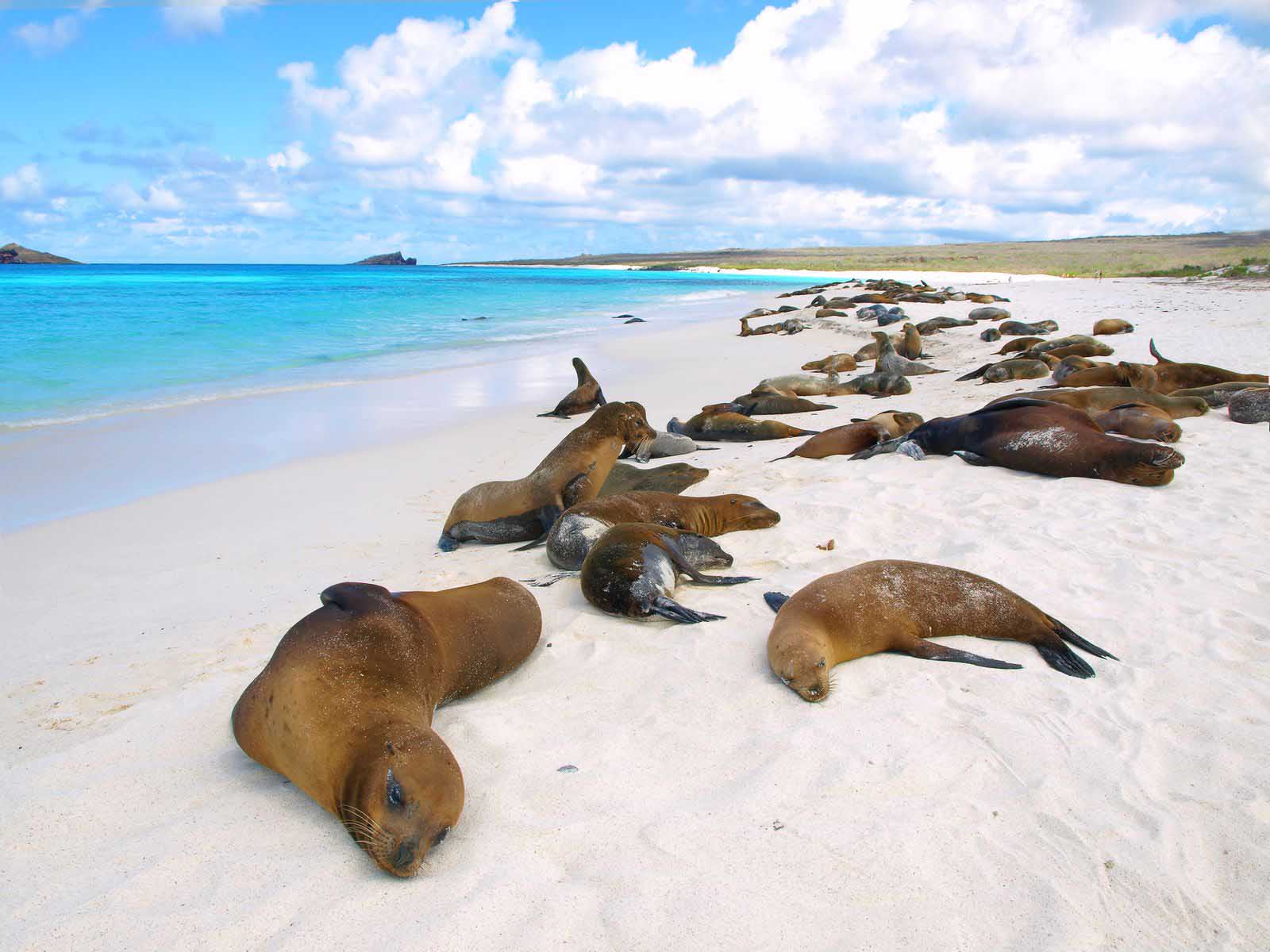
20. Galapagos Mystique: The Enigma of the Post Office Barrel
As you explore the Southern island of Floreana, whether through a captivating cruise or a stay at Puerto Velasco Ibarra town, don't forget to pack your postcards. An encounter with the legendary Post Office Barrel awaits, an activity that transcends time and bridges cultures. Embrace the opportunity to tuck your messages within this storied barrel, ensuring to retrieve postcards from those who reside close to your abode. This form of communication continues to thrive, with letters traversing the globe in the hands of travelers. While the journey might span a year, the anticipation is well worth it as a tangible connection arrives from distant lands. Rooted in the 18th century practices of whaling ships, this tradition emerges as a testament to human history on the islands. A timeless thread that weaves nostalgia into the modern fabric of island exploration, allowing us to momentarily escape the whirlwind of contemporary life.
21. Nature's Ingenious Arrivals: Galapagos Settlers of the Sea
In the Galapagos, the saga of settlement unfolds with an unparalleled twist. The archipelago's creatures, like the resilient iguanas and other diminutive denizens, embarked on their journey through the seas, oftentimes carried on the wings of driftwood and oceanic debris. Guided by the currents, they embarked on a perilous voyage that ultimately led them to this volcanic haven. The giants among them, the tortoises, hold their own nautical secret. While theories speculate, it's conceivable that these gentle behemoths navigated the waves as stowaways on buoyant rafts of vegetation. As nature's pioneers, these animals etched their destiny upon these shores, embodying the remarkable spirit of survival and adaptation that defines the Galapagos.
Other similar blogs
Check Our Galapagos Cruises:



